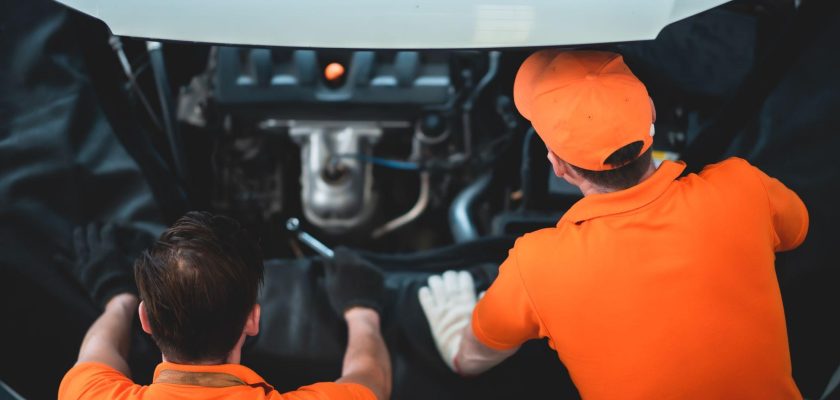Subaru’s transmission development has been uniquely shaped by the company’s commitment to all-wheel drive technology and horizontally-opposed engine configurations. This distinctive approach has resulted in transmission systems that must accommodate unique packaging requirements while delivering the reliable performance and distinctive driving characteristics that define the Subaru brand.
The Symmetrical All-Wheel Drive Foundation
Subaru’s Symmetrical All-Wheel Drive system represents one of the most comprehensive approaches to all-wheel drive integration in the automotive industry. Unlike part-time or reactive systems, Subaru’s full-time all-wheel drive requires transmissions specifically designed to continuously distribute power to all four wheels effectively.
The longitudinal engine and transmission layout used in most Subaru vehicles creates a balanced drivetrain configuration that contributes to predictable handling characteristics. This layout requires transmission designs that can accommodate the unique packaging and power distribution requirements of the Symmetrical AWD system.
Center differential integration within Subaru transmissions provides controlled power distribution between front and rear axles while allowing for speed differences during cornering. These differentials must operate reliably under varying conditions while maintaining the smooth operation expected from modern transmissions.
Manual Transmission Excellence
Subaru’s manual transmissions have earned exceptional reputations among driving enthusiasts for their precise shifting characteristics and robust construction. The close-ratio gear sets used in performance applications like the WRX and STI provide optimal acceleration while maintaining reasonable cruising characteristics.
The integration of all-wheel drive components within manual transmission cases requires sophisticated engineering to manage space constraints while maintaining strength and reliability. Subaru’s solutions demonstrate exceptional packaging efficiency without compromising performance or durability.
Sequential manual transmissions used in limited production vehicles like the STI showcase Subaru’s capability in developing advanced transmission technologies for specialized applications. These transmissions provide rapid shifting capabilities while maintaining the durability required for high-performance use.
Continuously Variable Transmission Development
Subaru’s implementation of CVT technology has focused on maintaining the engaging driving characteristics that define the brand while providing improved fuel efficiency. The Lineartronic CVT system addresses common concerns about CVT operation through sophisticated control programming and enhanced durability.
The integration of all-wheel drive capability with CVT technology presents unique engineering challenges that Subaru has successfully addressed through innovative design solutions. These systems must distribute power continuously while accommodating the infinite ratio variation that CVT operation provides.
Advanced control algorithms in Subaru CVTs create more natural acceleration characteristics than many competing systems, addressing driver preferences while maintaining efficiency benefits. These programming solutions demonstrate Subaru’s understanding of driver expectations and their commitment to maintaining engaging performance.
Performance Transmission Applications
High-performance Subaru applications, particularly in WRX and STI models, feature transmission modifications that enhance performance while maintaining reliability under demanding conditions. These applications often include strengthened components, modified gear ratios, and enhanced cooling systems.
The six-speed manual transmissions used in STI applications represent some of the most robust units available in production vehicles, capable of handling significant power increases while maintaining precise shifting characteristics. These transmissions demonstrate Subaru’s expertise in high-performance drivetrain development.
Close-ratio gear sets in performance applications allow engines to operate within optimal power bands more effectively, enhancing acceleration performance while maintaining usability for daily driving. These carefully selected ratios balance performance requirements with practical considerations.

Photo by Erik Mclean on Unsplash
Cooling and Reliability Considerations
The integration of all-wheel drive components within transmission cases creates additional heat generation that must be managed effectively to ensure long-term reliability. Subaru’s transmission cooling systems are specifically designed to address these thermal management challenges.
Advanced lubrication systems in Subaru transmissions ensure proper fluid circulation and component protection under varying operating conditions. These systems must accommodate the unique requirements of continuously operating all-wheel drive components while maintaining conventional transmission lubrication needs.
Component durability in Subaru transmissions reflects the demanding requirements of all-wheel drive operation and the brand’s commitment to long-term reliability. Strengthened components and premium materials ensure consistent performance throughout extended service lives.
Electronic Control Integration
Modern Subaru transmissions incorporate sophisticated electronic control systems that manage both transmission operation and all-wheel drive power distribution. These integrated systems provide seamless operation while optimizing performance and efficiency based on driving conditions.
Vehicle Dynamics Control integration with transmission systems allows for precise management of power distribution and traction characteristics. These systems can adjust transmission behavior and all-wheel drive operation to enhance stability and performance simultaneously.
Advanced diagnostic capabilities in Subaru transmissions provide comprehensive monitoring of system operation and component condition. These systems support preventive maintenance approaches and help identify potential issues before they affect performance or reliability.
Specialized Applications and Variations
Subaru’s transmission development includes specialized applications for specific vehicle requirements, such as the increased ground clearance needs of Outback models or the performance demands of STI applications. These variations demonstrate the flexibility of Subaru’s transmission architecture.
Hybrid vehicle applications require additional complexity to integrate electric motor assistance with traditional transmission functions. Subaru’s hybrid systems maintain all-wheel drive capability while incorporating electric powertrains seamlessly into the drivetrain architecture.
Commercial and fleet applications often require transmission modifications to handle increased durability requirements and specialized operating conditions. Subaru’s transmission designs accommodate these requirements while maintaining the reliability characteristics expected from the brand.
Manufacturing Quality and Precision
Subaru’s transmission manufacturing processes emphasize precision and quality control to ensure consistent performance and reliability across their entire product line. Advanced manufacturing technologies support tight tolerances and exceptional component quality.
Quality control procedures in Subaru transmission production include comprehensive testing of both mechanical components and electronic control systems. These procedures verify performance specifications and reliability characteristics before transmissions are installed in vehicles.
The integration of all-wheel drive components during transmission assembly requires specialized procedures and quality control measures. Subaru’s manufacturing expertise ensures proper assembly and calibration of these complex systems.
Aftermarket and Performance Enhancement
The popularity of Subaru vehicles among performance enthusiasts has created extensive aftermarket support for transmission upgrades and modifications. Many enthusiasts seekaffordable JDM Subaru transmissions that may offer enhanced performance characteristics or different specifications.
Performance modifications for Subaru transmissions often focus on strengthened components, improved cooling systems, and modified gear ratios to handle increased power levels. The robust basic design of Subaru transmissions generally accommodates these modifications well when properly implemented.
The strong enthusiast community surrounding Subaru vehicles contributes to extensive knowledge sharing and technical development for transmission modifications and maintenance. This community support enhances the ownership experience and provides valuable resources for performance enhancement.

Photo by Evgeni Adutskevich on Unsplash
Racing Heritage and Competition Applications
Subaru’s involvement in rally racing has provided valuable development experience that directly influences production transmission design. The demanding conditions of rally competition require transmissions that can deliver reliable performance under extreme circumstances.
World Rally Championship success has demonstrated the durability and performance capabilities of Subaru transmission architecture under the most demanding conditions possible. This competition experience contributes directly to production vehicle development and consumer confidence.
Competition-derived improvements often find their way into production transmissions, enhancing durability and performance for all customers. This technology transfer demonstrates the value of motorsport involvement in advancing transmission technology and reliability.
Future Development and Technology Integration
Current Subaru transmission development focuses on maintaining the brand’s distinctive all-wheel drive characteristics while incorporating advanced technologies for improved efficiency and performance. Future systems promise enhanced capability while preserving the driving characteristics that define Subaru vehicles.
The integration of electrification technologies with traditional all-wheel drive systems presents both challenges and opportunities for future transmission development. Subaru’s engineering expertise positions them well to address these evolving requirements while maintaining their performance advantages.
Continued investment in transmission technology ensures that Subaru will maintain their leadership in all-wheel drive systems while adapting to changing automotive technologies and environmental requirements. This commitment supports the brand’s distinctive positioning in the automotive marketplace.

